Overview
The article titled "10 Insights on Cross-Industry Talent Flow Datasets for Sales Leaders" presents a compelling exploration of how sales leaders can utilize cross-industry talent flow datasets to refine their hiring strategies and elevate team performance. It underscores the critical role of AI-driven platforms, such as Websets, in streamlining candidate discovery. Furthermore, it articulates the advantages of comprehending workforce dynamics to proactively address skill gaps, a strategy essential for driving organizational success and fostering revenue growth.
Introduction
Understanding the dynamics of talent flow across industries is a pivotal factor for sales leaders seeking to elevate their recruitment strategies. By leveraging cross-industry talent flow datasets, organizations can uncover critical insights that not only streamline hiring processes but also align talent acquisition with the ever-evolving market demands.
As the landscape transforms and the necessity for diverse skill sets grows, sales leaders must consider:
- How can they effectively harness these insights to outpace the competition and cultivate agile teams?
This question is not just a challenge; it is an opportunity to redefine recruitment in a rapidly changing environment.
Websets: AI-Powered B2B Lead Generation for Talent Discovery
Websets harnesses advanced AI algorithms to revolutionize , particularly in candidate discovery. By analyzing cross-industry talent flow datasets, business leaders can pinpoint candidates or organizations that align with their specific requirements. This capability not only streamlines hiring processes but also fosters a more strategic approach to forming sales teams, ensuring that the right talent is in place to drive revenue growth.
Industry experts have noted that integrating AI into recruitment processes can significantly enhance efficiency. Studies show that companies utilizing AI tools experience a marked improvement in their hiring outcomes. Furthermore, the ability to automate lead scoring and outreach allows teams to focus on high-potential candidates, ultimately leading to improved conversion rates and a robust pipeline.
As we look toward 2025, advancements in AI are poised to further refine these processes, making it crucial for sales leaders to embrace these technologies to maintain a competitive edge. As Richard Branson aptly stated, 'Hire character, train skill,' emphasizing the necessity of aligning recruitment strategies with advanced algorithms to identify candidates who not only possess the required skills but also resonate with the company culture.
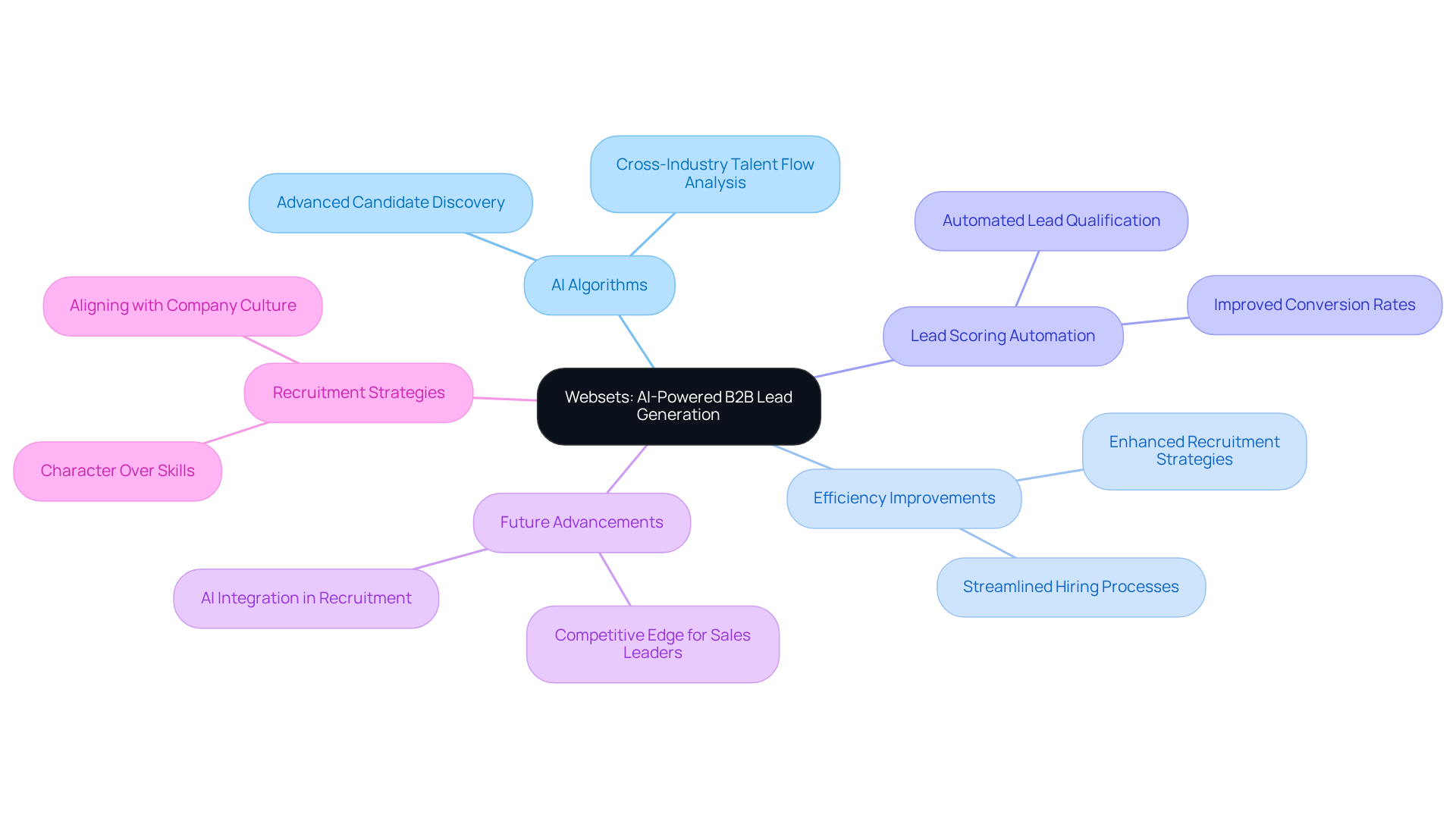
Understanding Cross-Industry Talent Flow Datasets: Key Concepts
Cross-industry talent flow datasets reveal vital insights into the movement of professionals across various sectors. These datasets, known as cross-industry talent flow datasets, highlight trends in skill mobility, enabling organizations to pinpoint where abilities are concentrated and how they can tap into new skill pools.
For business executives, leveraging Websets' AI-driven candidate discovery and qualification tools is essential. These tools help identify potential hires who bring diverse experiences and insights from different sectors. By harnessing Websets' comprehensive search capabilities—filtering candidates by skills, experience, and location—managers can significantly enhance team performance and adaptability.
This strategic approach ensures that the right individuals are attracted to .
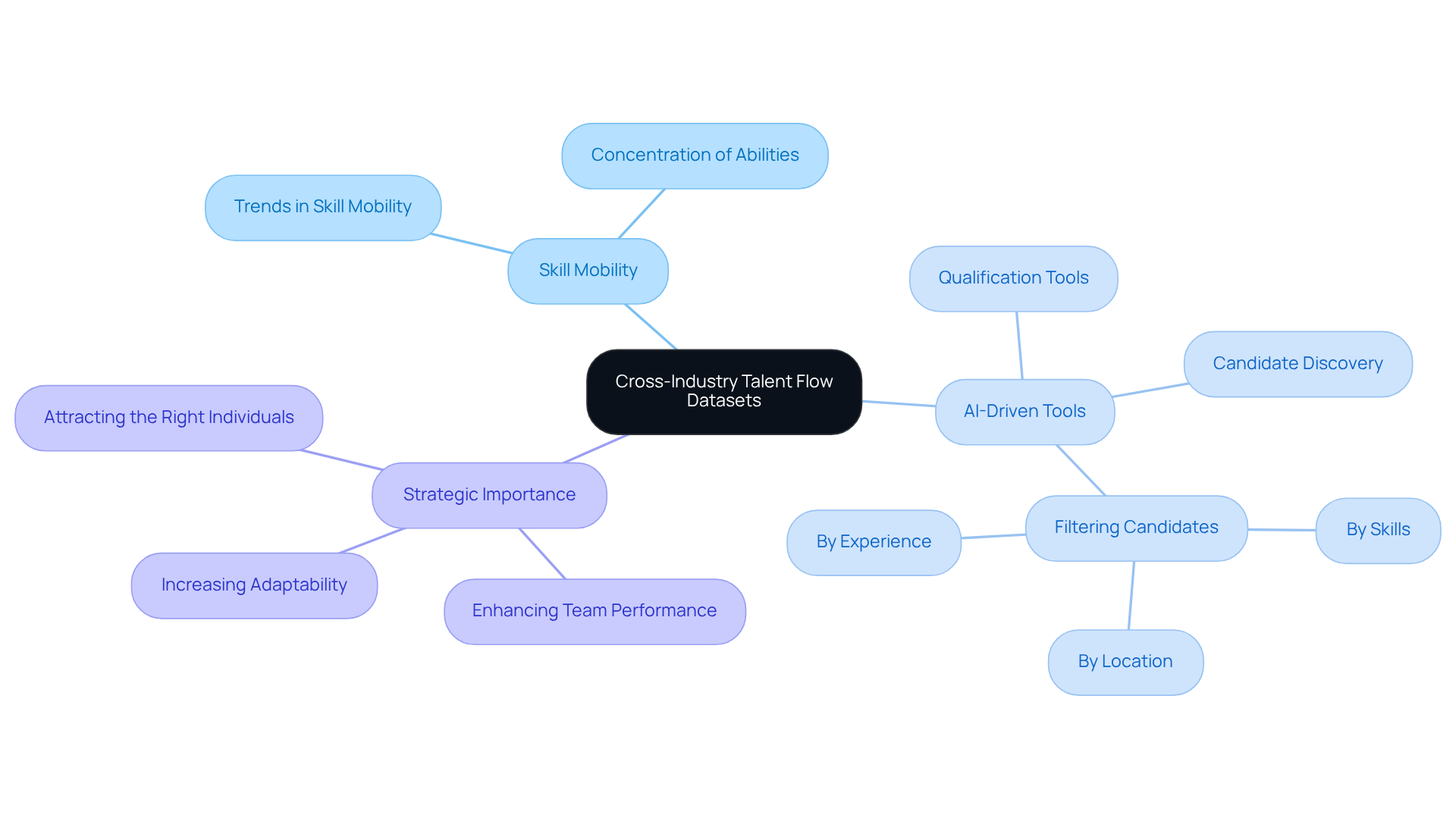
Data Analytics: Enhancing Insights into Talent Flow Dynamics
Data analytics is revolutionizing how organizations understand and manage workforce flow dynamics. By leveraging historical data alongside current market trends, business leaders can pinpoint areas facing workforce shortages or surpluses. This analytical approach empowers , enabling companies to target candidates with the exact skills required to fill gaps within their sales teams.
For instance, predictive analytics can anticipate future workforce needs based on evolving market conditions, ensuring organizations stay ahead of the competition. As we approach 2025, integrating data analytics into hiring strategies will be crucial for identifying skill gaps and aligning recruitment practices with organizational goals.
Industry experts emphasize that the ability to forecast talent requirements is not merely beneficial; it is vital for maintaining a competitive edge in business. By harnessing these insights, sales leaders can make informed decisions that enhance their hiring processes and drive overall business success.
Moreover, with Websets' SOC2 certification, comprehensive data processing agreements, and premium support through custom Service Level Agreements, organizations can have confidence that their data is managed with the utmost security and compliance. This allows them to concentrate on leveraging AI-driven tools for enriched recruitment and data analysis.
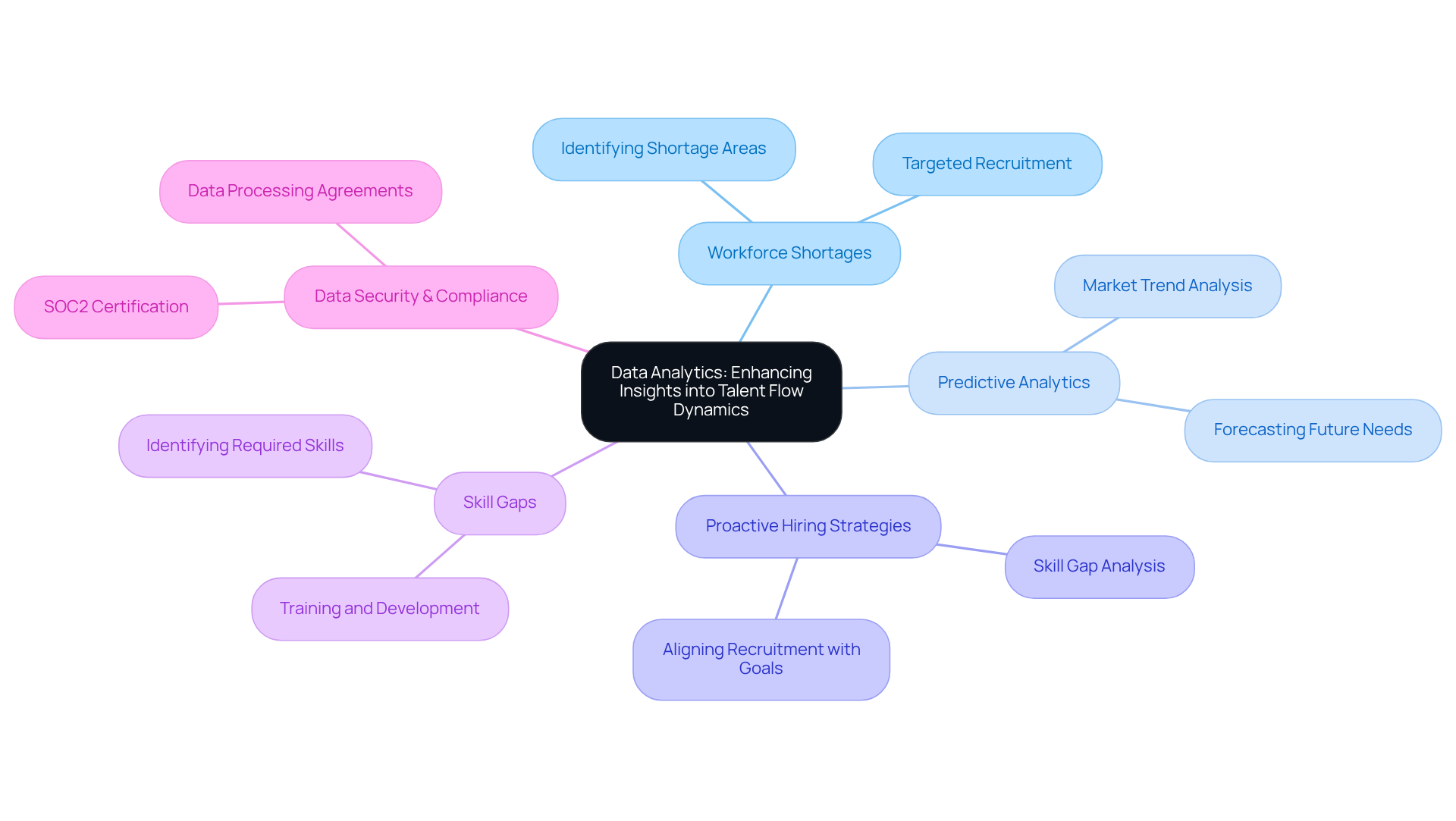
Collaboration Across Industries: Facilitating Talent Mobility
Cooperation among sectors is essential for enhancing workforce mobility and leveraging cross-industry talent flow datasets to drive innovation. By forging partnerships with organizations across various sectors, companies can leverage cross-industry talent flow datasets to implement talent exchange programs that significantly broaden their talent pool. These collaborations not only introduce diverse perspectives but also bolster problem-solving capabilities, which are vital for adapting to market fluctuations. For instance, a technology company might transfer a software engineer with AI expertise to a marketing team in need of advanced analytics skills, fostering a synergy that benefits both parties.
Sales leaders must proactively pursue cross-industry partnerships to refine their hiring strategies. Such initiatives can cultivate a more adaptable team, equipped with a broader array of skills and insights. By leveraging Websets' AI-driven candidate discovery and qualification tools, sales teams can enhance their hiring processes, filtering candidates by skills, experience, and location to identify the ideal fit for their open positions. As Patrick Hull, Vice President of Future of Work at Unilever, notes, "When you can achieve that level of detail, you can become much more focused in your hiring, assigning the appropriate skills to the right tasks and projects."
Looking forward to 2025, the benefits of skill exchange programs, as highlighted by cross-industry talent flow datasets, are expected to grow, with organizations increasingly recognizing their role in enhancing employee satisfaction and engagement. By capitalizing on these programs, companies can not only fill specialized roles more efficiently but also foster a culture of continuous learning and adaptability. This empowers organizations to thrive in a competitive landscape, ultimately yielding improved outcomes in hiring and workforce management.
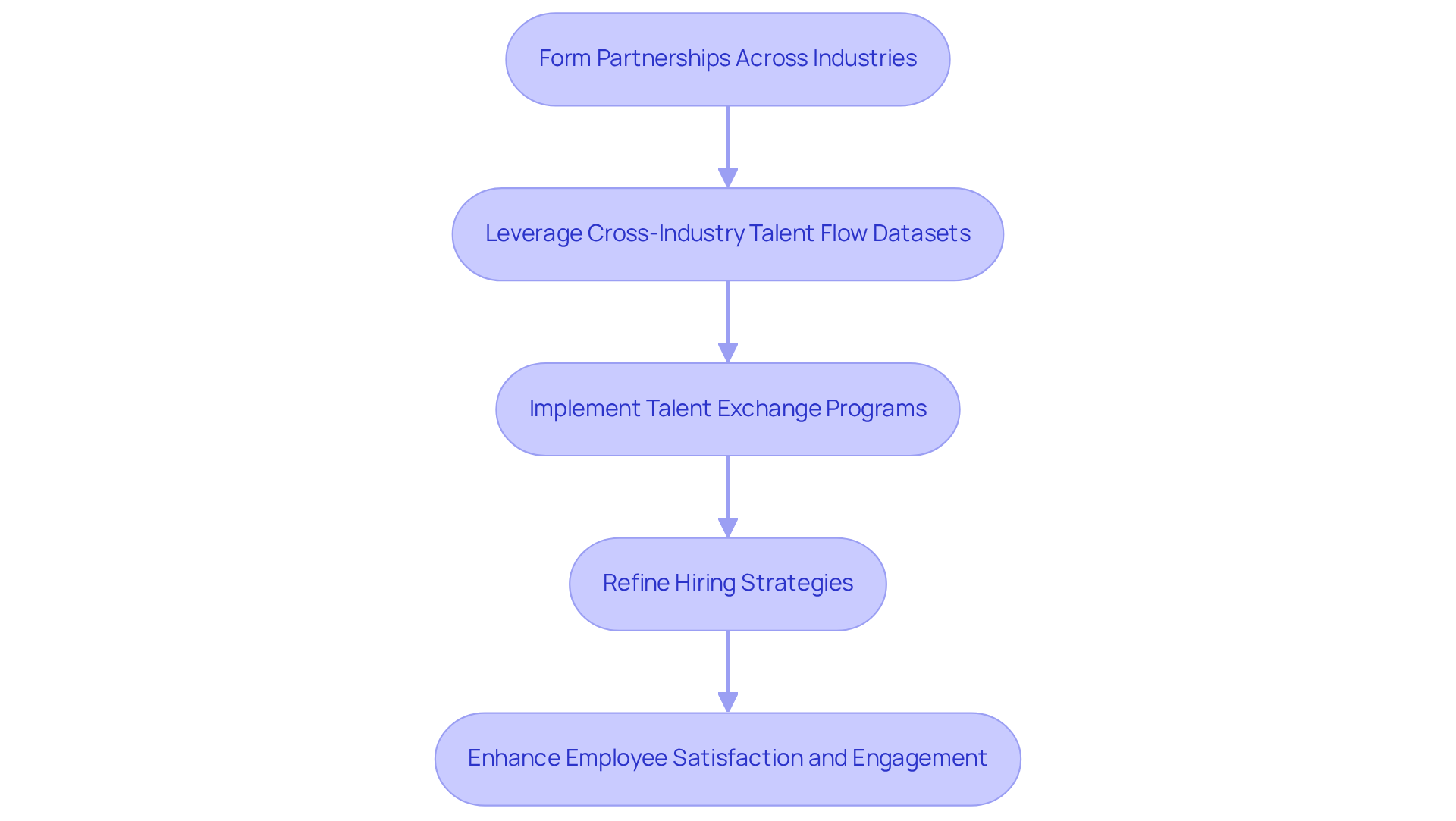
Technology's Impact on Cross-Industry Talent Flow: Streamlining Recruitment
Technology profoundly impacts the cross-industry talent flow datasets by streamlining hiring procedures. Advanced platforms such as Websets leverage AI to align candidates with job openings based on their skills and experiences, significantly reducing the time allocated to manual searches. Websets' is specifically designed for complex queries, enabling sales leaders to generate high-quality leads and enhance data for targeted hiring outcomes.
Moreover, the platform offers flexible high-capacity rate limits and premium assistance, ensuring organizations can efficiently navigate peak demands while tapping into a global pool of skilled individuals. Embracing these technological advancements will not only refine recruitment strategies but also utilize cross-industry talent flow datasets to attract talent from diverse sectors.
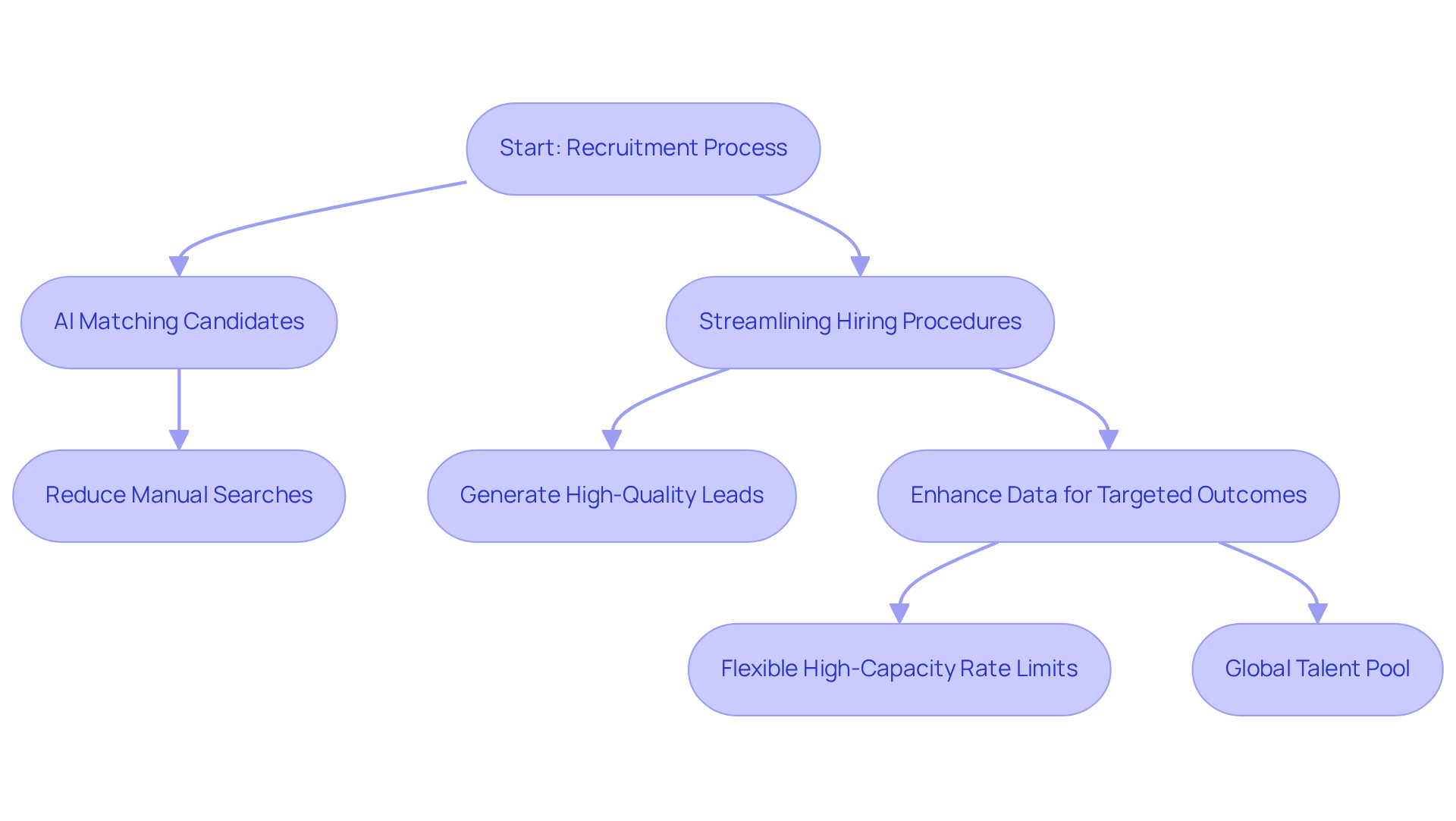
Challenges in Managing Cross-Industry Talent Flow: Key Considerations
Managing cross-industry talent flow datasets poses significant challenges, including differing organizational cultures, varying skill requirements, and potential resistance to change. Sales leaders must recognize these hurdles and formulate strategies to effectively address them. For instance, fostering an inclusive environment that values diverse experiences can significantly aid in the integration of new individuals. As Verna Myers aptly states, "Diversity is being invited to the party; inclusion is being asked to dance," underscoring the necessity of creating a workplace where all employees feel valued and included.
Moreover, providing comprehensive training and development opportunities is crucial to ensure that new hires possess the essential skills for success in their roles. Research indicates that organizations with strong learning cultures enjoy higher employee retention rates, as staff feel valued and supported in their professional growth. This observation is particularly relevant in today's context, where it has been noted that "," highlighting the urgent need for modern approaches to culture and retention.
Furthermore, Stephen Covey's insight that "Strength lies in differences, not in similarities" reinforces the importance of diverse perspectives in enhancing team dynamics and problem-solving capabilities. By focusing on these strategies, sales executives can adeptly navigate the complexities presented by cross-industry talent flow datasets, thereby improving team performance and achieving organizational objectives. Additionally, examples of groups that have successfully managed cultural integration challenges can provide valuable insights for those looking to implement these strategies.
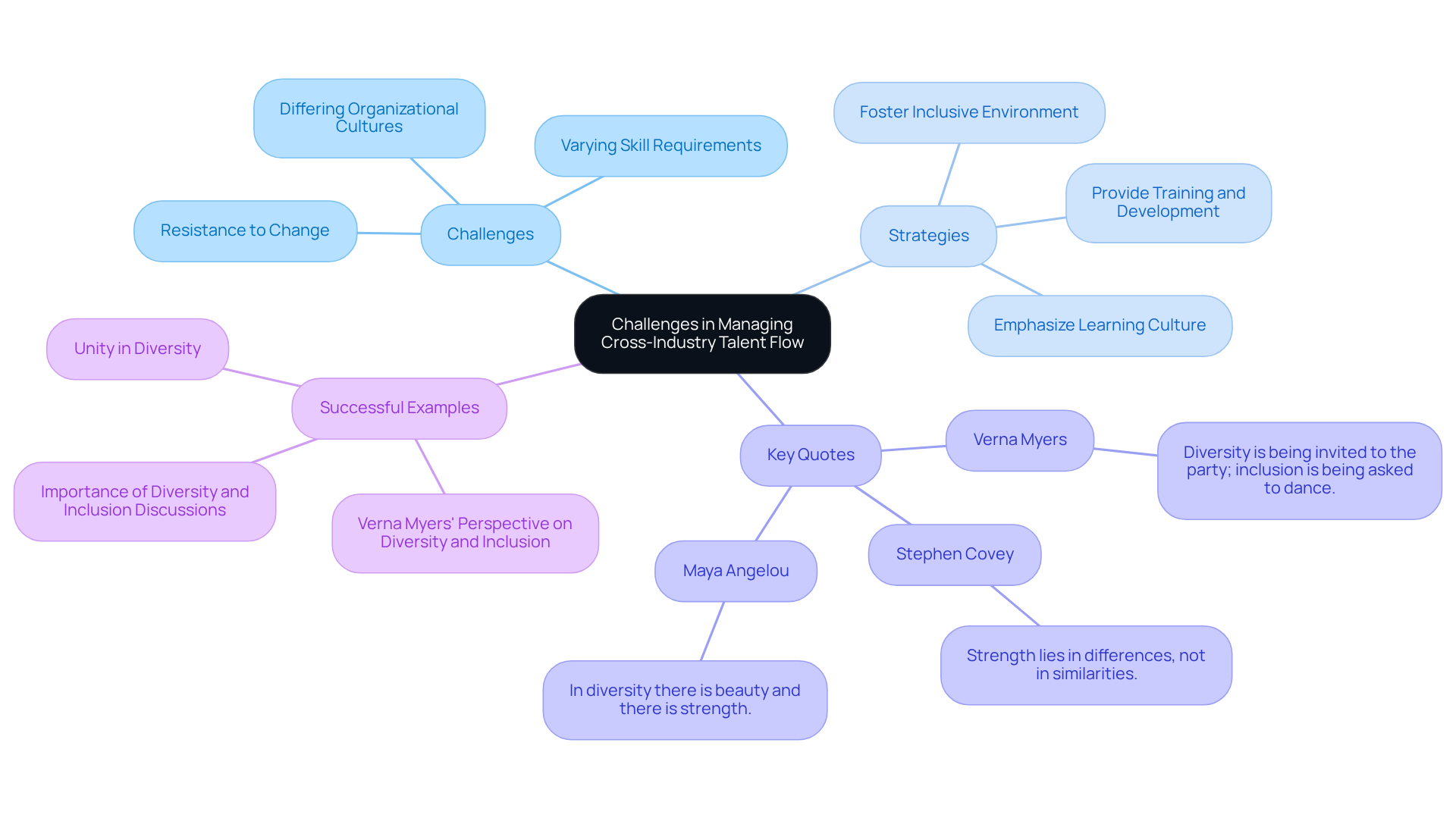
Leveraging Cross-Industry Talent Flow Datasets for Strategic Workforce Planning
Leveraging cross-industry talent flow datasets is essential for strategic workforce planning. By examining the cross-industry talent flow datasets, business leaders can recognize patterns in workforce movement and predict future recruitment requirements. This proactive method enables organizations to synchronize their hiring strategies with market demands, ensuring they possess the right personnel to meet revenue objectives. Moreover, understanding talent flow allows organizations to identify potential skill gaps and develop targeted training programs to address them.
With Websets' , sales leaders can significantly enhance their hiring efforts. By utilizing flexible, high-capacity rate limits and premium support tailored for enterprise needs, they can effectively collect and analyze intricate datasets. This capability not only improves their understanding but also empowers them to implement focused hiring strategies that align with their organizational goals.
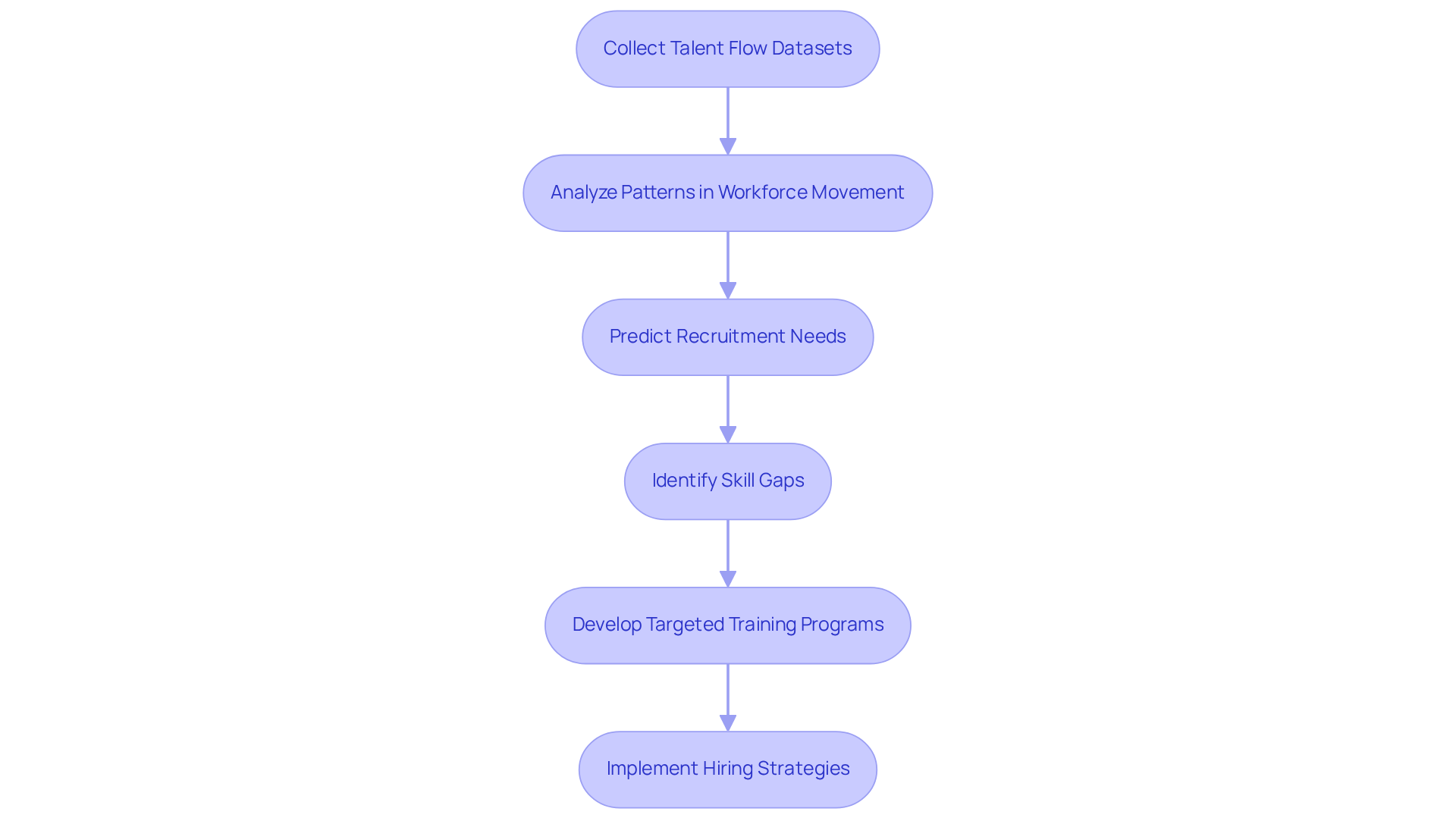
Compliance and Ethical Considerations in Talent Flow Data Management
Compliance and ethical considerations are paramount in workforce flow data management. Sales leaders must ensure that their hiring practices adhere to , such as the Personal Data Privacy Ordinance (PDPO), which includes principles like DPP1-DPP6 that govern the collection, use, and security of personal data. Respecting candidates' privacy is crucial; failure to comply can lead to significant legal repercussions. Implementing transparent data management practices builds trust with potential hires and enhances the organization's reputation.
Moreover, ethical considerations should guide the use of cross-industry talent flow datasets, ensuring they promote diversity and inclusion within the workforce. Organizations can implement strategies such as:
- Blind hiring processes
- Targeted outreach programs
to ensure equitable access to opportunities for all candidates. This reinforces their commitment to ethical hiring.
Legal experts emphasize that adherence to regulations is crucial for maintaining candidate trust and avoiding potential legal repercussions. By prioritizing ethical data management, sales leaders can create a more inclusive and reliable hiring environment.
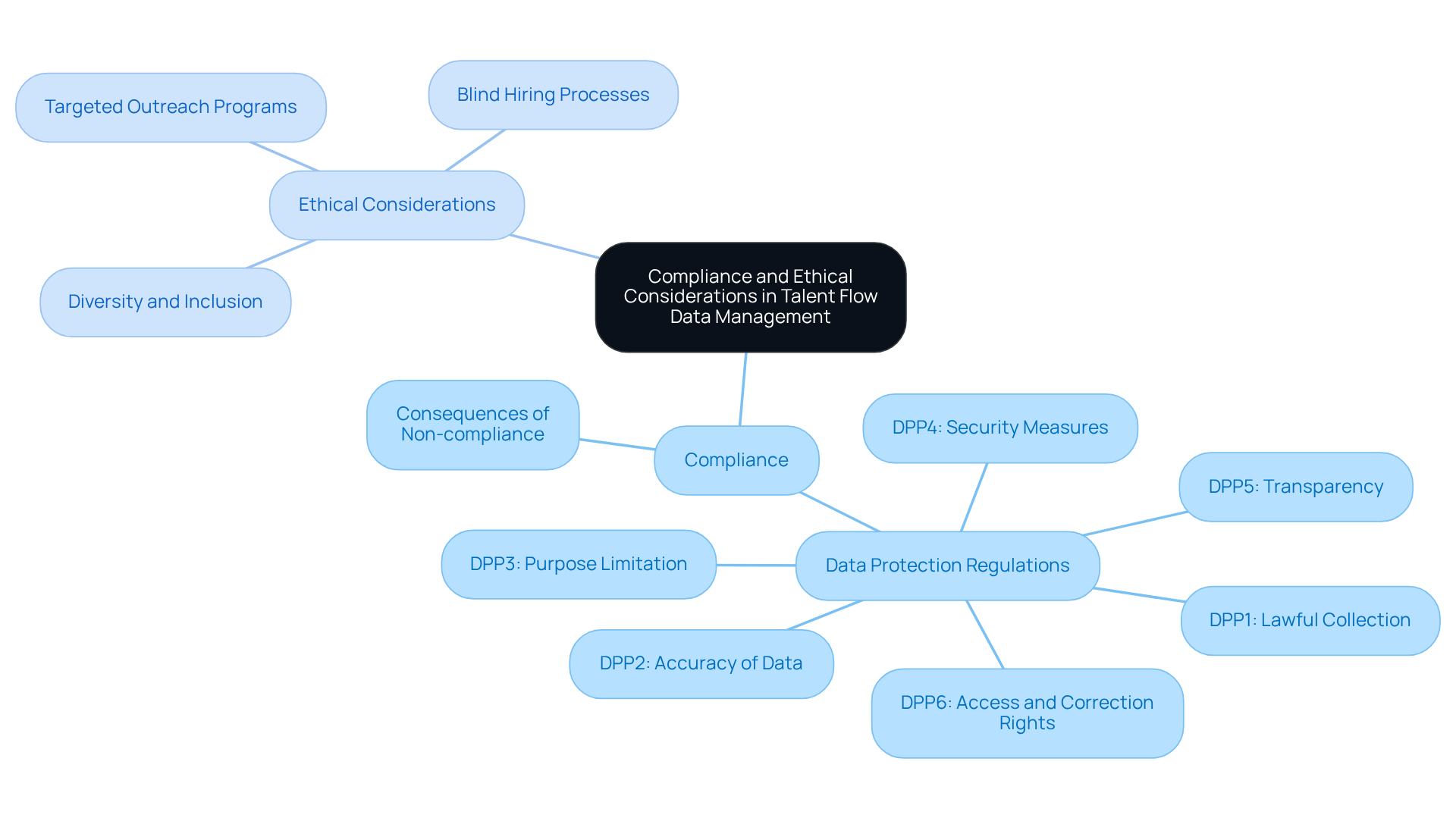
Future Trends in Cross-Industry Talent Flow: Preparing for Change
Future trends in cross-industry talent flow datasets highlight the growing necessity for flexibility and adaptability within the workforce. As industries undergo rapid transformation, the demand for diverse skill sets is set to rise significantly. To remain competitive, organizations must rethink their by leveraging cross-industry talent flow datasets. Sales leaders should proactively foster a culture of continuous learning and development, equipping their teams to navigate the complexities of a dynamic job market with agility. Embracing advanced technologies will be crucial for identifying and attracting top professionals utilizing cross-industry talent flow datasets.
Consider the construction industry, which is projected to experience an average of 382,000 job openings each month from August 2023 to July 2024. This statistic underscores the urgent need for adaptable recruitment practices. Furthermore, futurists predict that over two-thirds of skills deemed essential today will evolve within the next five years. This evolution necessitates a strategic focus on workforce adaptability.
Organizations that prioritize these elements will be better positioned to thrive in an increasingly interconnected and rapidly changing economic landscape. The time to act is now—embrace these trends to ensure your organization remains at the forefront of industry advancements.
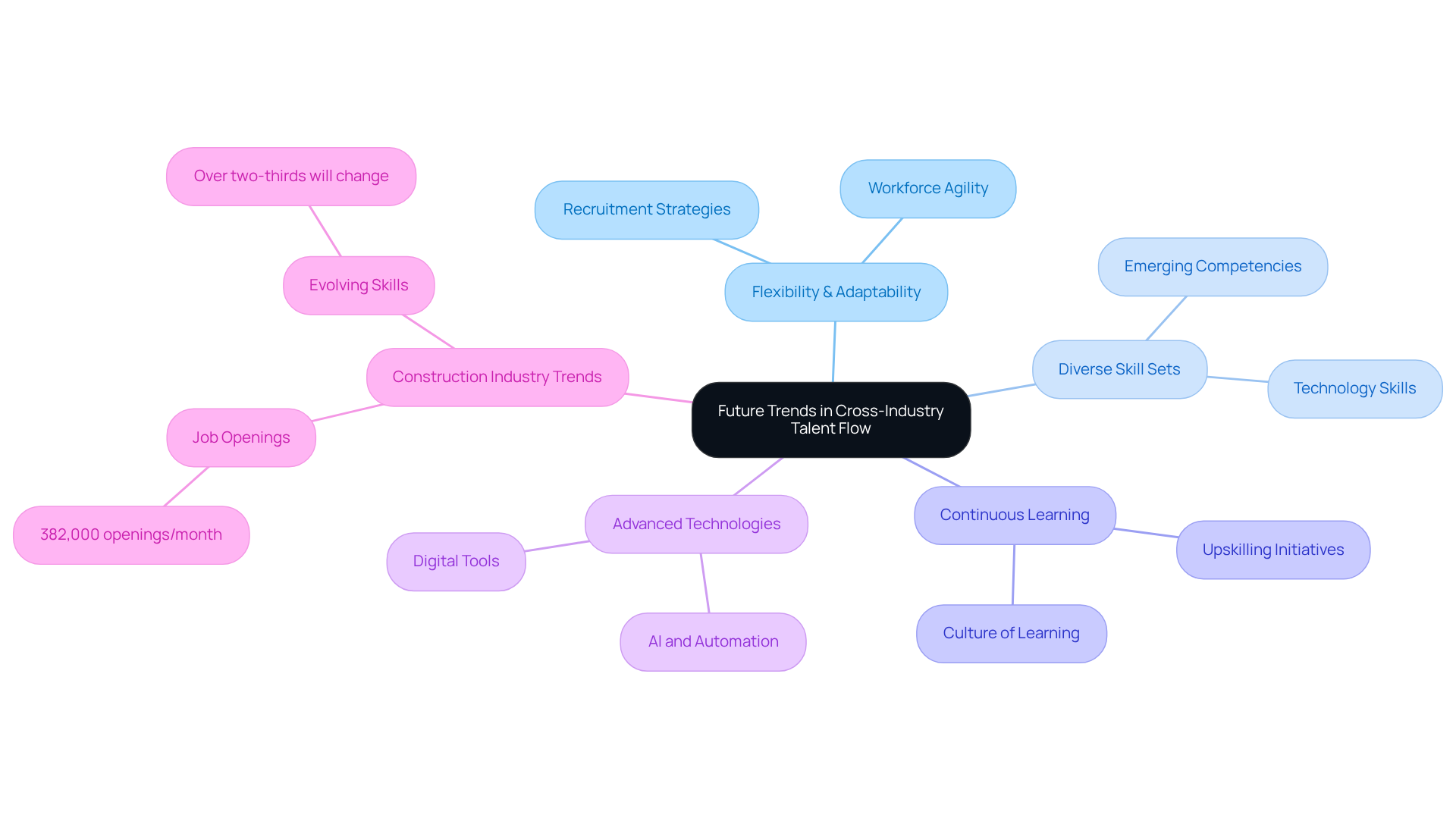
Key Takeaways: Maximizing the Value of Cross-Industry Talent Flow Insights
To fully harness the potential of cross-industry talent flow insights, sales leaders must prioritize the following strategies:
- Utilize AI-Driven Platforms: Implement platforms like Websets to streamline candidate discovery. This enables efficient identification of qualified individuals through advanced filtering by skills, experience, and location.
- Examine Workforce Flow Dynamics: Acquire a profound comprehension of cross-industry talent flow datasets. This understanding enhances hiring strategies and informs employment decisions, supported by insights from case studies that demonstrate successful applications of Websets.
- Encourage Cross-Industry Collaboration: Foster partnerships across various sectors to enhance talent mobility. This broadens the candidate pool, leveraging insights gained from Websets' market research tools.
- Adopt Advanced Technology: Embrace innovative technologies to simplify hiring processes. This approach reduces time-to-hire and improves candidate experience while ensuring compliance with ethical standards.
- Ensure Compliance and Ethical Data Management: Address compliance and ethical considerations in data handling. Utilize Websets' to maintain trust and integrity in recruitment practices.
By implementing these strategies, sales leaders can significantly enhance their talent acquisition efforts. Ultimately, this drives revenue growth and organizational success.
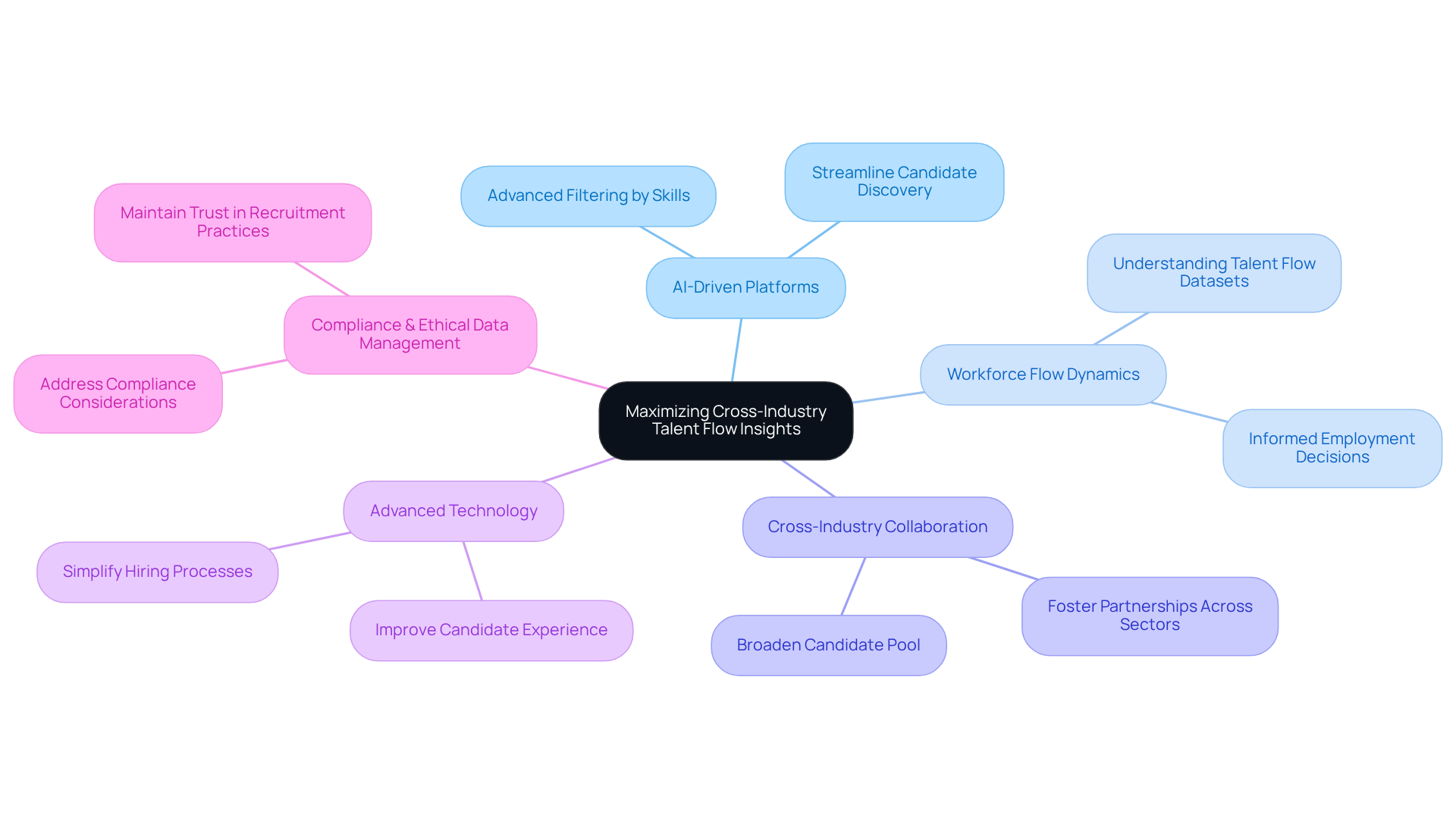
Conclusion
Harnessing cross-industry talent flow datasets is imperative for sales leaders who seek to enhance their recruitment strategies and drive organizational success. By leveraging advanced tools like Websets, businesses can streamline candidate discovery, ensuring they attract the right talent that aligns with their strategic goals. Embracing these innovative approaches not only optimizes hiring processes but also positions organizations to thrive in an increasingly competitive landscape.
The article highlights several key insights:
- The importance of utilizing AI-driven platforms to identify qualified candidates
- Understanding workforce flow dynamics to inform hiring decisions
- Fostering cross-industry collaborations to expand talent pools
It underscores the necessity of adopting advanced technology and maintaining compliance with ethical standards in data management to build trust and enhance recruitment practices.
Moving forward, it is crucial for sales leaders to proactively embrace these trends and strategies. By prioritizing continuous learning, fostering adaptability, and leveraging insights gained from cross-industry talent flow datasets, organizations can better navigate the complexities of the job market. Taking these steps will not only improve hiring outcomes but also contribute to a more dynamic and resilient workforce, ultimately driving sustained growth and success in the years to come.
Frequently Asked Questions
What is Websets and how does it assist in B2B lead generation?
Websets is an AI-powered platform that revolutionizes B2B lead generation, particularly in candidate discovery. It analyzes cross-industry talent flow datasets to help business leaders identify candidates or organizations that align with their specific requirements, streamlining hiring processes and enhancing the formation of effective sales teams.
How does AI integration impact recruitment efficiency?
Integrating AI into recruitment processes significantly enhances efficiency, as companies using AI tools experience improved hiring outcomes. Automation of lead scoring and outreach allows teams to focus on high-potential candidates, leading to better conversion rates and a stronger candidate pipeline.
What are cross-industry talent flow datasets?
Cross-industry talent flow datasets provide insights into the movement of professionals across various sectors, highlighting trends in skill mobility. They enable organizations to identify where skills are concentrated and how to access new skill pools for hiring.
How can business executives leverage Websets' tools?
Business executives can utilize Websets' AI-driven candidate discovery and qualification tools to identify potential hires with diverse experiences and insights from different sectors. The platform's comprehensive search capabilities allow managers to filter candidates by skills, experience, and location, enhancing team performance and adaptability.
What role does data analytics play in managing workforce dynamics?
Data analytics helps organizations understand and manage workforce flow dynamics by leveraging historical data and current market trends. This approach allows business leaders to identify areas of workforce shortages or surpluses and develop proactive hiring strategies to target candidates with the necessary skills.
Why is predictive analytics important for hiring strategies?
Predictive analytics is crucial for anticipating future workforce needs based on evolving market conditions. This foresight enables organizations to stay ahead of the competition by identifying skill gaps and aligning recruitment practices with organizational goals.
What security measures does Websets implement for data management?
Websets has SOC2 certification, comprehensive data processing agreements, and offers premium support through custom Service Level Agreements. These measures ensure that data is managed securely and in compliance, allowing organizations to focus on leveraging AI-driven tools for recruitment and data analysis.




